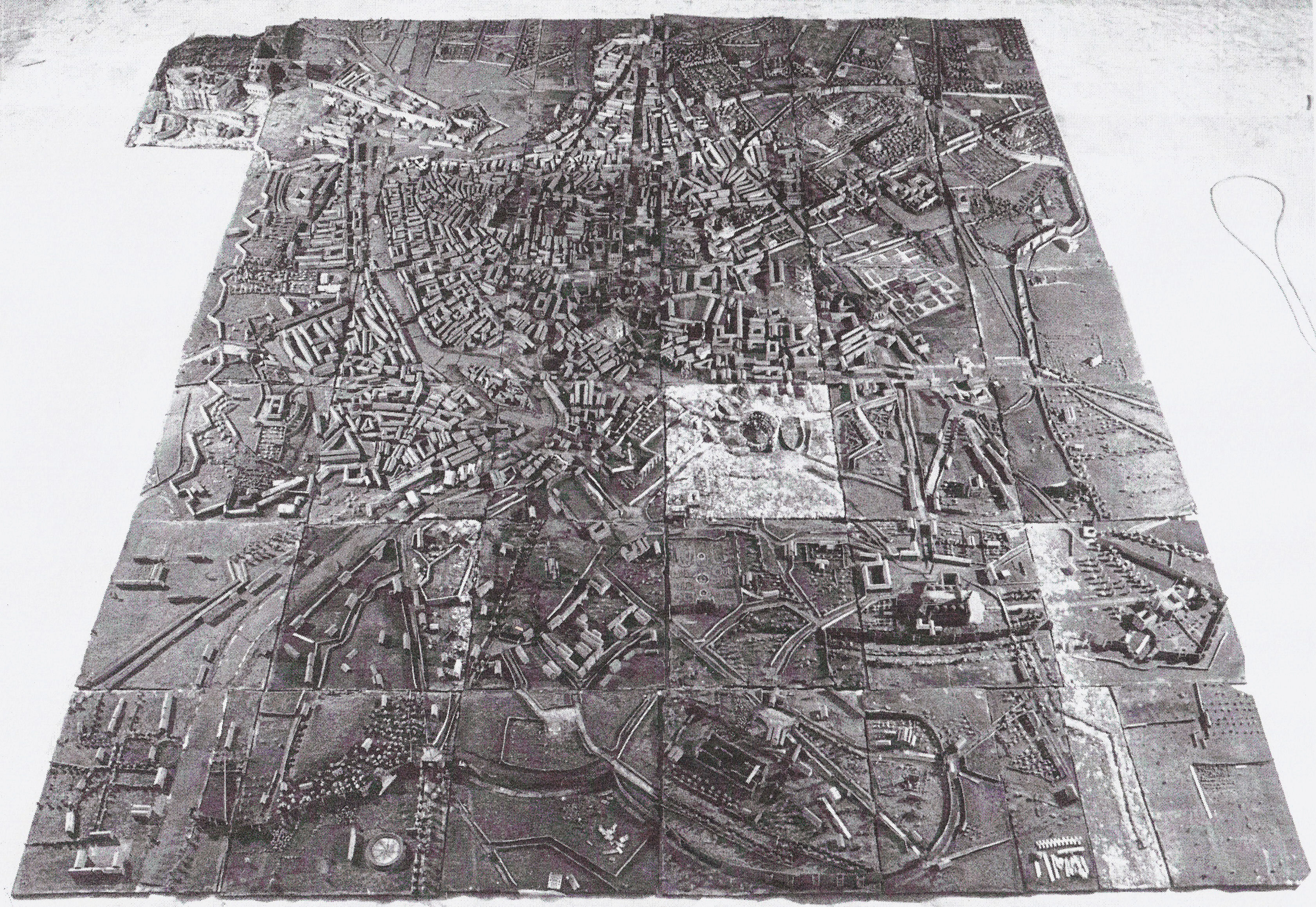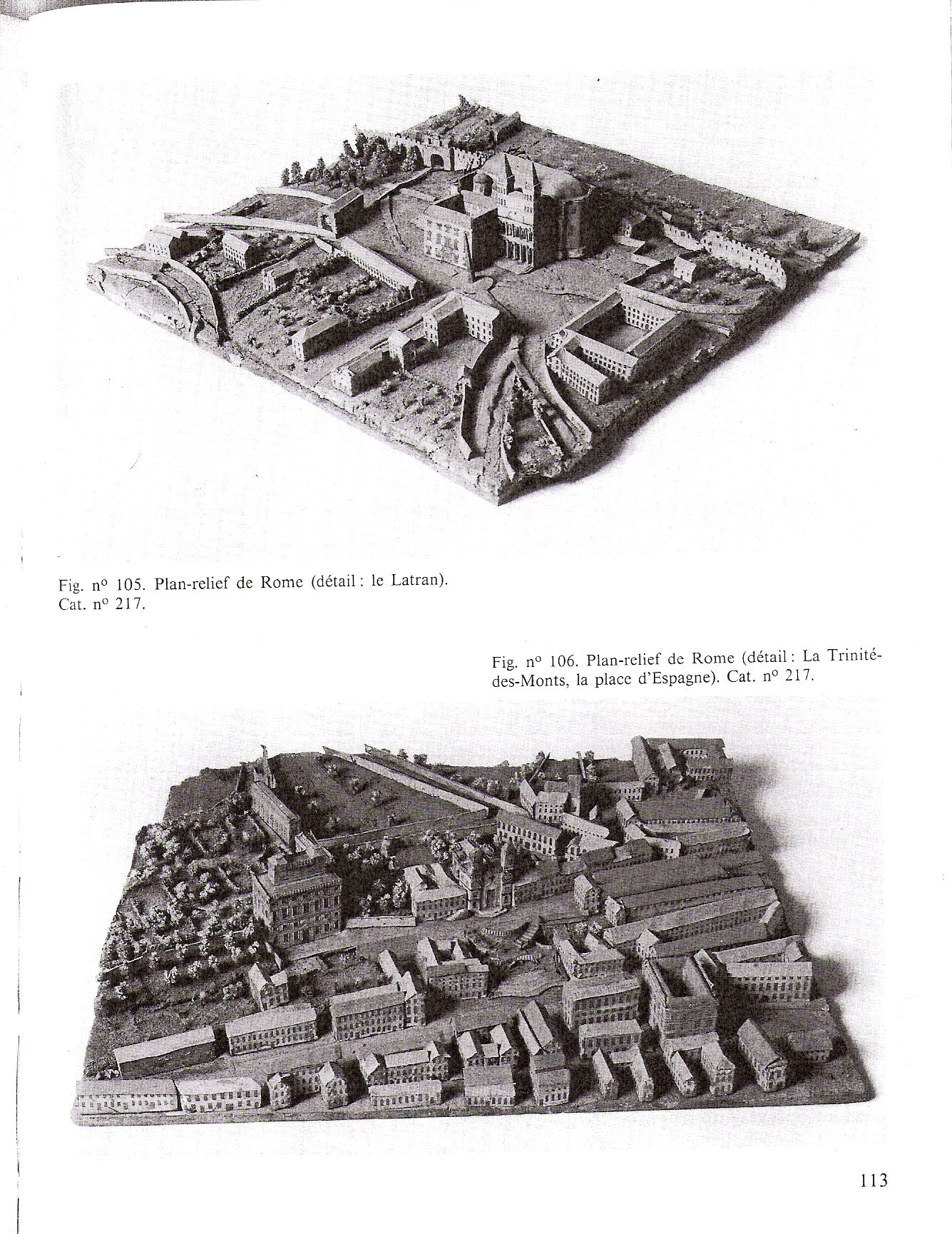

Consisting of 44 sections each about 50cm square which fit together, it forms a rectangle of 6 sections by 7, complemented in one corner by two sections which house the Vatican. The model is of the city within its walls, and of its immediate surroundings. Each piece of wood is covered with cork to suggest higher ground where appropriate and squashed fairly flat in other places, and dyed silk finely cut, mixed with sand and made wet so it could be rolled out to form meadows and ploughed fields. The Tiber is made of coloured silver paper; trees and shrubs are silk twisted round wire; in the streets and squares ornamental tiles are reproduced with painted paper; the noble buildings (St John Lateran, great palaces, the Pantheon, etc.) are made of cardboard or cork sometimes with pieces of soft wood added (columns, pilasters, etc.). For the ordinary houses and blocks of flats the artist made do with blocks of wood covered with pasted paper on which the architectural details are painted or drawn with a pen, or where necessary punched out of cardboard and stuck on.
Pictures from A forgotten collection: the ancient models of the Museum of National Antiquities by Jannic Durand